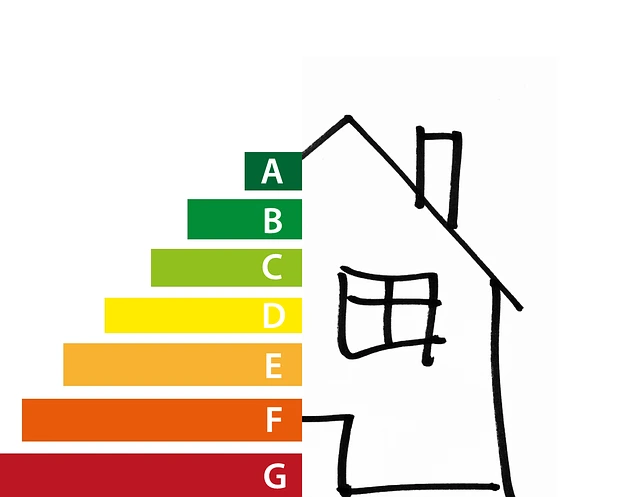Each month, we publish a series of articles of interest to homeowners -- money-saving tips, household safety checklists, home improvement advice, real estate insider secrets, etc. Whether you currently are in the market for a new home, or not, we hope that this information is of value to you. Please feel free to pass these articles on to your family and friends.
In This Issue:
-
The Biggest Mistakes Homebuyers Make - Homebuyers, especially first-timers, often fall into avoidable traps that can derail their purchase or lead to regret.
-
How To Make Your Home Stand Out Online - Today's buyers shop online first, so your home's digital presence needs to shine.
-
Going Green What You Need to Know About Energy Efficient Homes - Energy-efficient homes are no longer just a trend-they're a smart investment for both buyers and sellers.
The Biggest Mistakes Homebuyers Make
Summary
Homebuyers, especially first-timers, often fall into avoidable traps that can derail their purchase or lead to regret. This guide outlines the most frequent and costly mistakes buyers make, from skipping pre-approval to misjudging hidden costs. It not only highlights these issues but also explains how to avoid them with practical, expert-backed solutions. Whether you're new to the market or have bought before, this report is your safety net.
Buying a home is one of the most exciting and stressful financial decisions you'll ever make. It's a journey that combines emotion, logic, risk, and reward. Unfortunately, it's also a journey where mistakes are common and expensive. Whether you're a first-time buyer or returning to the market after several years, understanding the most common pitfalls can save you time, money, and future regret.


Mistake #1: Skipping Mortgage Pre-Approval
One of the most fundamental errors buyers make is jumping into house hunting without knowing what they can truly afford. Without a mortgage pre-approval, you risk falling in love with homes outside your price range or missing out in a competitive bidding war. Pre-approval helps clarify your budget, boosts your credibility with sellers, and makes your offer stronger. Avoid the mistake by consulting a lender early, checking your credit score, and gathering necessary financial documents before your search begins.
Mistake #2: Not Budgeting Beyond the Down Payment
Many buyers are prepared to put down 5â20% of the purchase price but forget about closing costs, moving expenses, property taxes, and home maintenance. These additional costs can add thousands of dollars to your first year of ownership. Smart buyers plan for these expenses in advance, often allocating an extra 2â5% of the purchase price to cover these surprises. Additionally, be sure to leave some financial buffer for unexpected repairs.
Mistake #3: Ignoring Location for Features
It's easy to get swept up in granite countertops and double vanities, but remember that location impacts long-term value more than finishes do. Buyers who prioritize cosmetic appeal over a great neighborhood often end up regretting their decision when commute times, school districts, or resale value don't match expectations. Always balance the quality of the home with the quality of its surroundings and never compromise on location without serious thought.
Mistake #4: Failing to Understand the Market
Real estate markets vary dramatically between regions and even neighborhoods. In a seller's market, waiting too long to make an offer could cost you the home. In a buyer's market, rushing in may mean overpaying. Too many buyers enter the process without understanding supply, demand, average days on market, or list-to-sale price ratios. The solution? Do your homework or work with a trusted local agent who knows the dynamics and can help you strategize.
Mistake #5: Skipping the Home Inspection
In competitive markets, buyers are sometimes tempted to waive inspections to make their offers more appealing. But skipping a home inspection is one of the riskiest decisions a buyer can make. Inspections often reveal critical issues, from roof damage to faulty wiring that isn't visible during a walkthrough. Even if you must waive the inspection contingency, consider getting an informational inspection before closing so you at least know what you're buying.
Mistake #6: Letting Emotions Take the Wheel
It's common to become emotionally attached to a particular home. But letting your feelings override your financial logic can be dangerous. Bidding wars, clever staging, or personal nostalgia can push you into decisions that don't align with your long-term needs. Stay grounded by defining your "must-haves" vs. "nice-to-haves," and lean on a trusted advisor to help you think objectively during negotiations.
Mistake #7: Not Comparing Lenders and Loan Options
Not all mortgages are created equal. Some buyers take the first offer they receive without exploring options for better rates or terms. Interest rates, points, and fees vary widely between lenders, and even a small difference in rate can add up to thousands over the life of a loan. Shop around, ask questions, and request Loan Estimates to compare offers side by side.
Mistake #8: Misunderstanding the Purchase Contract
A purchase agreement is a legally binding contract and misunderstanding it can have serious consequences. Buyers sometimes overlook financing contingencies, deadlines, or seller responsibilities, leading to confusion, delays, or even loss of deposit. Always read the contract carefully and ask your agent or attorney to clarify any language you don't understand.
Mistake #9: Not Planning for the Long Term
Your needs today may change in the next 5â10 years. Buyers who don't consider life changes like growing families, job relocations, or aging in place often find themselves needing to sell or renovate too soon. While no one can predict the future, considering flexibility and future resale potential in your purchase decisions will better protect your investment.
Mistake #10: Going It Alone
Trying to navigate the buying process without expert guidance can lead to missed opportunities and hidden risks. A good real estate agent not only provides access to listings but also negotiates on your behalf, explains complex documents, and connects you to trusted service providers. Partnering with a professional can make the difference between a stressful transaction and a smooth experience.
Buying a home doesn't have to be overwhelming or filled with regret. By learning from the missteps of others and taking a proactive, informed approach, you can avoid the biggest traps in the process. With the right knowledge and the right support, you'll be on your way to a successful, confident purchase and a home you'll love for years to come.
How To Make Your Home Stand Out Online
Summary
Today's buyers shop online first, so your home's digital presence needs to shine. From stunning photography to powerful listing descriptions, this guide shows sellers how to make their home irresistible at first glance. Learn what works, what doesn't, and how to make a strong impression before buyers ever step through the door.
The vast majority of homebuyers start their search online, scrolling through listings on their phone, tablet, or desktop. In those few seconds of browsing, they decide whether to click, save, or move on. That's why your online listing needs to stop them in their tracks.


Here's how to stand out and get more showings, faster.
1. Professional Photography Is Non-Negotiable
The first image is your first impression. Amateur photos with poor lighting, bad angles, or clutter can ruin interest instantly. A pro photographer:
Knows how to frame each room
Uses wide-angle lenses and HDR editing
Captures the home at the best time of day
Highlights natural light, space, and flow
The first image is your first impression. Amateur photos with poor lighting, bad angles, or clutter can ruin interest instantly.
2. Stage for the Camera
What looks good in person doesn't always photograph well. For pictures:
Declutter aggressively
Remove personal items (photos, magnets, niche décor)
Keep counters, beds, and floors clear
Turn on every light and open blinds
Virtual staging is an option for empty homes, but real furniture shows better in person.
3. Write a Headline That Hooks
"Sunlit Family Home with Private Backyard Oasis"
"Modern Open Concept Living Near Top Schools"
Use emotion, benefits, and lifestyle to draw buyers in. "3 Bed, 2 Bath in Quiet Area" won't stop a buyer's scroll.
4. Tell a Story in the Description
Avoid generic real estate jargon. Instead:
Highlight what makes your home unique
Focus on benefits: "walk to shops," "perfect for entertaining," "morning sun in the kitchen"
Be concise, but paint a picture buyers can imagine themselves in
5. Use Every Photo Slot-Strategically
Most listing sites allow 25â40 images. Use them all, but prioritize order:
Start with the best shot (usually the front or living space)
Use a logical flow: front, entry, living, kitchen, bedrooms, baths, yard
Include exterior shots in daylight and twilight
Most listing sites allow 25â40 images. Use them all, but prioritize order.
6. Add Video or 3D Tours
Buyers want to explore before visiting. A video walk-through or Matterport 3D tour can:
Increase engagement and showing requests
Attract out-of-town or relocating buyers
Help buyers picture the flow of the home
Buyers want to explore before visiting. A video walk-through or Matterport 3D tour can make a big difference.
7. Market Beyond the MLS
Your agent should share the listing on:
Social media (Facebook, Instagram, YouTube)
Targeted ad campaigns (Google, social, retargeting)
Real estate platforms (Realtor.com, Zillow, Redfin, etc.)
Email newsletters or buyer blasts
Your agent should share the listing across multiple channels.
8. Use Captions and Floor Plans
Add short captions to photos: "Spacious primary suite with walk-in closet." Include a floor plan if possible, as many buyers are visual and want to see layout and flow.
9. Keep It Updated
If your listing has been sitting:
Change up the featured image
Rewrite the headline or summary
Add seasonal photos or updates (e.g., "new A/C installed")
Fresh listings draw renewed interest, even from past browsers.
You only get one chance to make a first impression and today, that impression is online. With professional visuals, compelling descriptions, and a smart marketing plan, your listing can shine in a sea of homes. The result? More clicks, more showings, and a faster, better sale.
Going Green What You Need to Know About Energy Efficient Homes
Summary
Energy-efficient homes are no longer just a trend-they're a smart investment for both buyers and sellers. From savings on bills to increased resale value, going green pays off. This report breaks down what makes a home energy-efficient, how to identify or upgrade key features, and why eco-conscious living is influencing modern real estate decisions.
As climate awareness grows and energy costs rise, buyers are looking for homes that are not only beautiful-but also efficient. Whether you're a buyer hunting for long-term savings or a seller trying to make your home stand out, understanding what qualifies as "green" and why it matters can give you a major edge.


What Is an Energy-Efficient Home?
An energy-efficient home uses less power to heat, cool, and operate daily systems-without sacrificing comfort. Key elements include:
High-efficiency HVAC systems
Smart thermostats
Insulated windows and doors
Proper attic and wall insulation
LED lighting and Energy Star appliances
Solar panels or alternative energy systems
Why Buyers Care
Lower Utility Bills â Efficient homes reduce monthly expenses, especially in extreme climates.
Comfort â Better insulation and systems mean consistent temperature and airflow.
Resale Value â Buyers know green upgrades can boost future resale prices.
Environmental Impact â Today's buyers want to minimize their carbon footprint.
Why Sellers Should Care
Stronger Marketing Appeal â Green features can attract eco-conscious buyers.
Higher Appraisals â Energy-efficient upgrades often increase appraised value.
Faster Sales â Homes with sustainable upgrades can stand out in crowded markets.
Rebates and Incentives â Many regions offer credits for adding energy-saving improvements before listing.
Green Certifications to Know
ENERGY STAR â Government-backed label for energy-saving appliances and systems.
LEED Certification â Indicates a home is built or remodeled to strict environmental standards.
HERS Score â Measures a home's energy efficiency; lower scores mean greater efficiency.
Net-Zero â A home that produces as much energy as it consumes.
Simple Upgrades That Make a Difference
Even small improvements can deliver big returns:
Install a smart thermostat
Replace old windows with double-pane glass
Seal ductwork and add insulation
Upgrade to energy-efficient lighting and appliances
Questions Buyers Should Ask
What's the age and SEER rating of the HVAC system?
What's the average monthly utility cost?
Are there any energy assessments or certifications?
Is there solar installed-and if so, is it leased or owned?
Questions Sellers Should Prepare For
Can you provide recent energy bills?
Are warranties available on systems or upgrades?
Are any local rebates transferable to the buyer?
Has the home had a professional energy audit?
Financing Green Features
Some buyers use special loan programs that factor energy efficiency into affordability, such as:
Energy-Efficient Mortgages (EEMs)
Fannie Mae's HomeStyle Energy Program
Green Home Grants or Incentives
Ask your lender or agent if these are available in your region.
Energy efficiency isn't just a buzzword-it's a real advantage in today's real estate market. Buyers love the savings and comfort, and sellers can use eco-friendly upgrades as powerful selling points. Whether you're going green slowly or aiming for net-zero, understanding energy-smart homes helps you make better real estate decisions.

